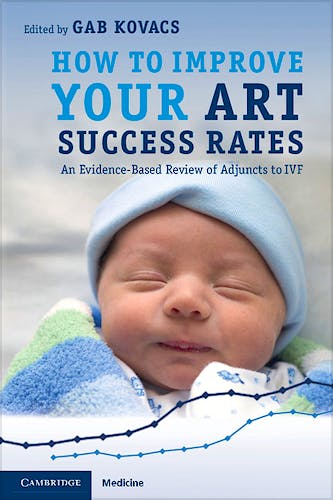

No hay productos en el carrito



How to Improve Your Art Success Rates. an Evidence-Based Review of Adjuncts to Ivf
Kovacs, G.
1ª Edición Agosto 2011
Inglés
273 pags
470 gr
16 x 23 x 1 cm
ISBN 9781107648326
Editorial CAMBRIDGE
LIBRO IMPRESO
-5%
88,57 €84,14 €IVA incluido
85,16 €80,90 €IVA no incluido
Recíbelo en un plazo de
2 - 3 semanas
LIBRO ELECTRÓNICO
-5%
80,10 €76,10 €IVA incluido
77,02 €73,17 €IVA no incluido
Acceso On Line
Inmediato
Description
IVF is now established worldwide as a clinical service. Units are striving to improve their success rates, and many treatments are being advocated as 'yet another breakthrough'. The purpose of this book is to help clinicians to evaluate each of these new treatments. Each chapter is written by a recognized international expert in the field and the chapters are short and succinct, summarizing the latest evidence-based information for each topic and treatment. Sections cover patient selection and preparation, the role of AIH before IVF, stimulation, monitoring, laboratory techniques, embryo transfer, ancillary treatments and assessment of results. How to Improve your ART Success Rates: An Evidence-Based Review of Adjuncts to IVF is essential reading for all clinicians working with infertility and assisted reproduction, and is also a valuable addition to any medical library.
Features
- Concise chapters are ideal for the busy infertility specialist
- Chapters are authored and edited by respected international figures in the field of assisted reproduction
- Summarizes the key evidence-based information related to assisted reproduction, with reference lists highlighting priority further reading material
Table of Contents
Preface
Part I. Patient Selection and Preparation:
1. Pre-treatment hormone assessment to optimize IVF outcomes
2. Role of pelvic ultrasonography in the selection and preparation of patients
for in vitro fertilization (IVF)
3. Is pre-IVF laparoscopy/hysteroscopy worthwhile?
4. The management of polyps and fibroids
5. Immunological screening in women undergoing IVF
6. Natural killer cell analysis
7. Weight control
8. Do vitamins and natural supplements improve pregnancy rates?
9. PCO patients – is there a role for metformin
10. An evidence-based medicine review of adjunctive treatments to IVF
11. Management of hydrosalpinges
Part II. The Role of AIH Before IVF:
12. IUI – who should be treated and what are the expectations?
Part III. Stimulation:
13. What superovulation protocol is best?
14. FSH vs hMG: gonadotrophins are gonadotrophins are gonadotrophins
15. Agonists or antagonists for ovarian stimulation?
16. Should the oral contraceptive pill or progestogens be used to schedule controlled
ovarian hyperstimulation (COH)?
17. Dehydroepiandrosterone (DHEA)
18. Luteinizing hormone supplementation in ART
19. The use of growth hormone in IVF
20. Prevention of ovarian hyperstimulation syndrome
21. Is IVF the best approach?
Part IV. Monitoring:
22. How to monitor for the best results
Part V. Laboratory:
23. Sperm selection for assisted conception
24. ICSI for all?
25. Day of embryo transfer
26. The beneficial effects of culture medium supplementation with growth factors
in the development of human embryos in vitro
27. Metabolomics
28. Role of preimplantation genetic diagnosis (PGD)
29. Assisted hatching
Part VI. Embryo Transfer:
30. The role of ultrasound in embryo transfer
31. Does dummy embryo transfer help?
32. Does position matter?
33. Embryo transfer catheters
34. Bed rest after embryo transfer
35. Intercourse around the time of embryo transfer
Part VII. Ancillary Treatments:
36. Heparin and aspirin as an adjunctive treatment in women undergoing IVF
37. Place of oestrogen supplements in luteal phase after ET
38. Progesterone supplements
39. Place of corticosteroid co-treatment in IVF
40. Immunotherapy for IVF implantation failure: 'just in case' or 'just in time'?
41. Chinese herbs
42. Adjuvant therapy to improve endometrial development – sildenafil and/or
hyperbaric oxygen therapy
43. The role of acupuncture in IVF
44. Psychological perspectives on IVF treatment
45. Future fertility for young women with cancer: protection, preservation or
both?
Part VIII. Assessment of Results:
46. How to report IVF success rates
47. Why do we need RCTs and how to design them?
48. How to assess Cochrane reports
Index.
© 2025 Axón Librería S.L.
2.149.0